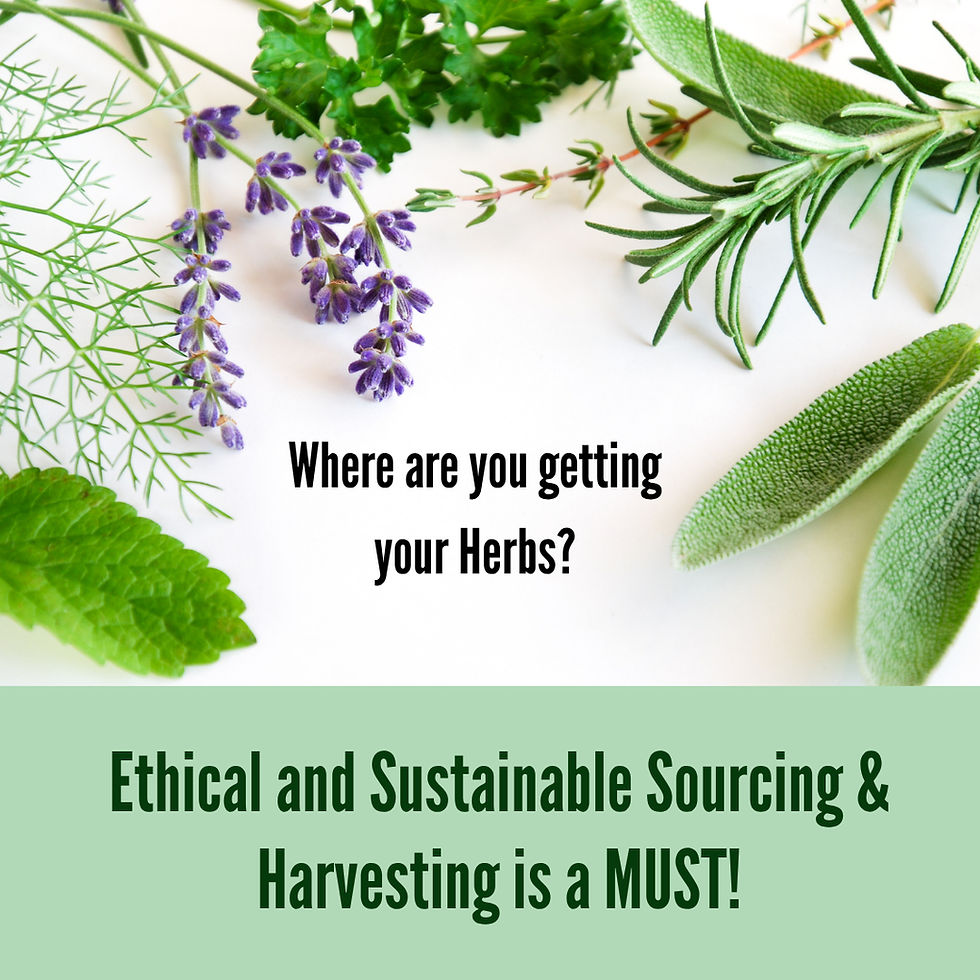The Importance of Climate Change in Herbalism
- thegreenwitchllc
- Jun 4
- 2 min read
Updated: Jun 28

Climate Change and Plant Vulnerability
Climate change affects plant life in complex and often unpredictable ways. Shifts in temperature and precipitation can disrupt the delicate ecosystems that many medicinal herbs depend on. Some plants are highly sensitive to small changes in their growing conditions.
For example, Goldenseal and American Ginseng, two widely used North American herbs, are already considered at risk due to habitat loss and overharvesting. Climate stress only adds to their vulnerability, potentially pushing them toward extinction.

Additionally, climate change influences the timing of plant growth cycles, known as phenology. A warming climate might cause plants to bloom earlier, disrupting relationships with pollinators or altering the concentration of active medicinal compounds. This not only impacts the plants themselves but also diminishes their effectiveness and sustainability as herbal remedies.
The Role of Ethical Herbalism

As herbalists, foragers, and plant lovers, we have a responsibility to practice our craft in a way that honors and protects the earth. Ethical herbalism begins with awareness—understanding where our herbs come from, how they’re grown or harvested, and what impact our choices have on plant populations.
One step is to avoid wild-harvesting endangered herbs altogether. Instead, seek out cultivated sources or plant your own. Look for suppliers that are certified organic or that work with conservation organizations. Learn about the United Plant Savers “At-Risk” and “To-Watch” lists, which provide essential guidance on which plants need protection.
Supporting Regenerative Practices

We can also be part of the solution by supporting regenerative agriculture and small-scale herb farms that focus on biodiversity, soil health, and sustainable harvesting. These practices help build resilience in plant populations, even in the face of climate change.
If you grow your own herbs, consider cultivating native plants and pollinator-friendly gardens. This not only supports biodiversity but also reduces dependence on wild-harvested sources. Remember—sometimes the most powerful medicine is already growing in your backyard and is often the medicine you need the most!
Advocacy and Education

Lastly, we must raise our voices. Whether through writing, teaching, or simply having conversations, herbalists can play a vital role in connecting others to the natural world and advocating for its protection. Climate change is not just an environmental issue—it’s a health issue, a cultural issue, and a call to reconnect with the earth in a more conscious way.
The Future of Herbalism
In conclusion, herbalism has always been about more than just plants. It’s about relationships with nature, our plant allies, Mother Earth, the land and our ancestors, and our own natural wisdom capable of amazing healing. As the climate shifts, we must deepen our commitment to those relationships by choosing sustainable practices and protecting the very ecosystems that give us life. The future of herbal medicine, the planet we call home, and us depend on it.
Together, let's embrace a more sustainable approach to herbalism. Every action counts, and being mindful of our herbal choices can make a difference. Remember, herbalism and environmental stewardship go hand in hand—working together for a healthier planet.






Comments